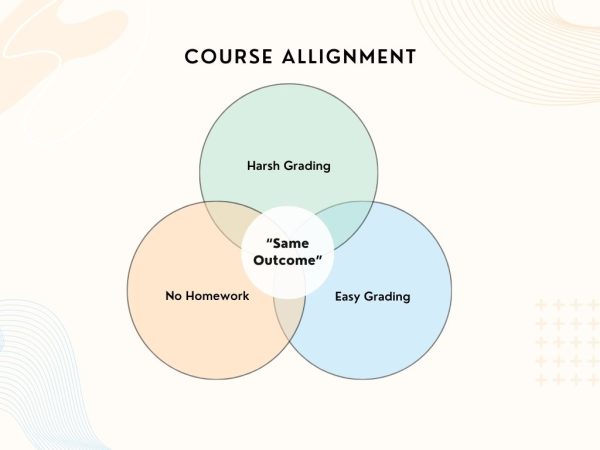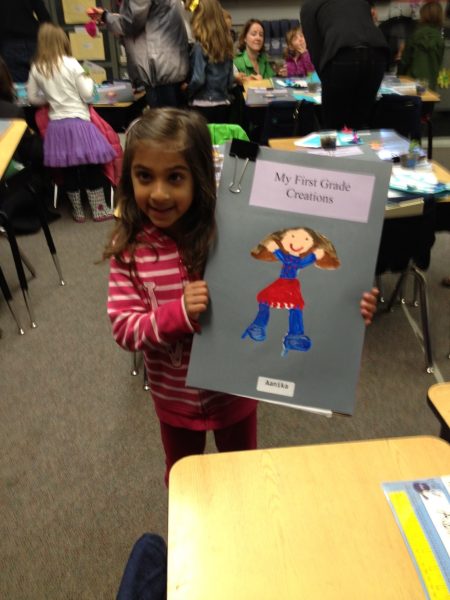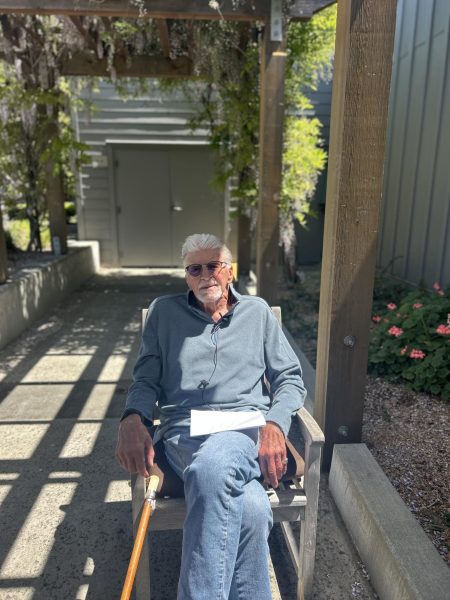Then versus now
The ever changing college experience
November 1, 2022
From admissions and application processes, to academics and social lives, the experiences of college students have remained consistent in some ways, yet ever changing in other aspects. As application deadlines approach in the upcoming months, college has been prominent in many students’ everyday lives, especially in conversations with their parents. Over the past generations, colleges have greatly shifted in their application processes, their diversity and their student academic and social lifestyles.
The Application and Admission Process
With technological advancements and intensified competition, the admissions and application processes have evolved. College and Career Center specialist Becky Bjursten has worked at Redwood for four years and seen these changes firsthand.
The college application system has further changed due to the creation and evolution of the online Common Application (Common App), a portal used by hundreds of colleges to receive applications, including virtual aspects such as submitting video interviews or online portfolios for some schools.
“With using an application system like Common App, [students] have access to 900 colleges on one application. That changes the amount of schools students apply to and how many schools [students] can access information about,” Bjursten said.
Gael Casner, a private college counselor who previously worked as a UC Berkeley Admissions Evaluator in 2006, 2007, 2010 and 2011, has seen other factors of applications change including the formatting becoming more user friendly.
“There weren’t portable document formats [like PDFs] 20 years ago, so a lot of [the application] would be printed out. You would [have to] keep a hard copy, because that would be the only way you would have validity that you actually sent [an application],” Casner said.
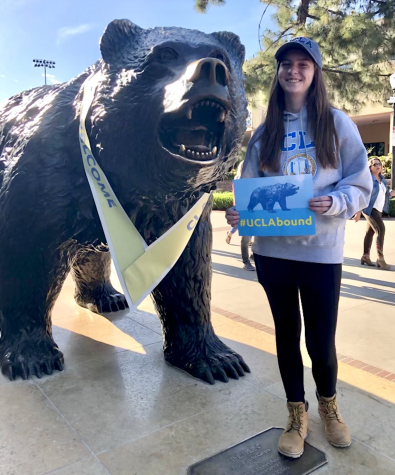
Additionally, there has been a significant increase in the number of supplemental essays applicants write. Casner has witnessed a spike in the number of colleges students are applying to, noting that many of her students apply to 14-17 colleges, heavily increasing the number of essays they must write. A typical student of Casner’s will have around 20 to 30 essays to write, however, she has even had a student complete 47 essays. According to Karen Dillard College Prep, 81 percent of freshman college applicants submitted three or more applications to colleges in 2017, which is 61 percent higher than 1995.
Acceptance rates have also plummeted over the past few decades, making it difficult to be admitted into popular institutions. For instance, according to The Michigan Daily, data reveals a 55 percent acceptance rate at the University of Michigan in the 2000-2001 school year, which has now decreased to 20 percent. Casner attributes the drop in acceptance rates to an increase in accessibility of college applications.
The factors colleges place value on have also evolved. COVID-19 prohibited students from taking the ACT or SAT, which led schools to see that standardized tests were not necessary in the admissions process. Standardized tests have become obsolete at many universities, partly in an effort to increase diversity and promote socioeconomic mobility. According to WKBN-TV Ohio, 80 percent of undergraduate institutions did not require standardized test scores for students enrolling in Fall 2022.
Grade inflation has also changed the admissions process over past generations. With more students having high GPAs and more weighted, Advanced Placement classes available, the goalpost for what is considered a high GPA is increasing.
“Many parents who are pleased that their kids have straight A’s don’t [understand] that over half the seniors applying to colleges have a 4.0 or [higher]. … Grade inflation is a big thing, and it makes it hard for parents and kids to grasp what their chances are at schools,” Casner said.


Diversity in the Board and Management of Universities
The management bodies at many universities have shifted their priorities, especially in recent years. Erica Schultz, one of the 24 members on Dartmouth’s Board of Trustees, is in her seventh year of an eight year term, working to make decisions for Dartmouth while focusing on the long term strategic and financial health of the school. Schultz notes the changes to the Board over the past decades has revolved around diversity and inclusion.
When Schultz was elected onto the Board in 2016, it included primarily people of the same gender, status and industry backgrounds resulting in a lack of diverse perspectives.
“When I joined, the Board was barely 30 percent women. There was a dominant set of experience in that a lot of trustees came from the finance and investment management world, so [the Board] was focused on financial management,” Schultz said.
Dartmouth expanded its Board of Trustees in 2007 allowing for it to become more diverse in later years, especially in the last few years. This represents a shift many universities have made over the last few decades in an effort to prioritize diversity in all facets.
“We expanded the Board to 24 members [allowing] us to get different points of view in the room [which] is important. We’re making high stakes decisions [and] we want to [ensure] that we’re thinking through [decisions] from all angles. Now, [the Board] has trustees from different fields including the legal, medical, business and media worlds. We have 50 percent gender parity, racial diversity, trustees who live in the U.S. and trustees who live internationally,” Schultz said.
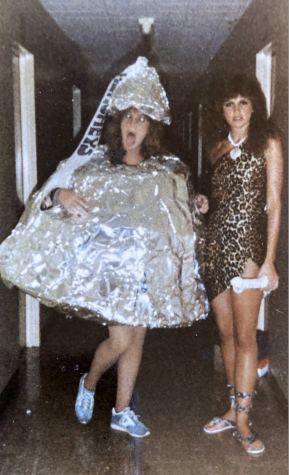
College Lifestyle
While living the college lifestyle, students often appreciate the freedom they have to manage their own time. Lori Ocheltree, a Redwood parent and University of California Los Angeles (UCLA) alumna, recognizes the constant shifts in institutions and explains what her experience as a college student looked like in 1981.
“[I had classes] four days a week. You’d get up, walk across campus, go [to] class for a couple [of] hours [then] have a break [where you could] go to the coffee house. [On] Monday nights [I would] go to [my] sorority for dinner and have a meeting afterwards,” Ocheltree said.
Decades later, there remains similarities between the typical college day. Currently, students’ schedules are based on their major and area of study which can be compared to the academic life around a decade ago. Haley Johnson, the daughter of Ocheltree and a current senior at UCLA, notes the new opportunities UCLA has developed over the past decade, and how it has shifted the social life on campus.
“A lot of people prefer to go to club meetings rather than sororities because we have a ton of different clubs [that] people prefer instead of having [the] giant time commitment that sororities and [fraternities] have,” Johnson said. “Internship programs, career fairs and a lot of little social things just fall into your lap.”
Ocheltree was part of the sorority Alpha Phi during her time at UCLA. However, Greek life wasn’t the only social gathering in college.
“There were community events all the time. Mardi Gras was one of them, Spring Sing and football games every weekend,” Ocheltree said.
During Ocheltree’s time at UCLA, students had a common schedule of going out on Fridays and Saturdays, avoiding week days. Currently, students work around their school schedule to follow traditions and events UCLA has to offer, even if that means going out on weekdays.
“There are Thirsty Thursdays, which a lot of the [fraternities host], so people go out [and then] have afternoon class on Fridays. Saturday’s [are] always a big time to go out for game days,” Johnson said.
Academic Life

College offers students the experience to dive deeper into their passions and explore topics that help shape their futures. As years progress, new students with different interests join universities thus creating a diverse student body. UCLA is known for the variety of educational programs and opportunities offered. However, Ocheltree reflects on the academic struggles she faced regarding her professors during her time at UCLA.
“There was [a lot of material] thrown [at you], subjects I had never heard of before [were] taught by people [who] were not great lectures, they [were very] dry. [The professors] were brilliant academic minds, but you can have a brilliant mind and not be a good teacher, so some of the subjects were really hard,” Ocheltree said. “You went through a lot of material in a short period of time and could fall behind. [This would] make midterms and finals super stressful, because not only would you have to catch up, but then you’d have to learn it.”
Now, the departments have expanded to include more personalized attention from professors, playing a significant role in the academic life of students.
“The actual academics are fairly difficult, [but] our professors try to encourage you and format the class so that people will succeed. But, the materials are challenging, especially deeper into studies [because] you get specific,” Johnson said.
Universities and the experiences of college students are constantly changing from generation to generation, leaving remnants of old traditions while forging new ways of learning with new priorities and admissions standards.













